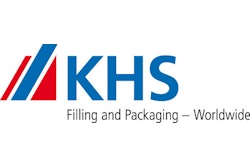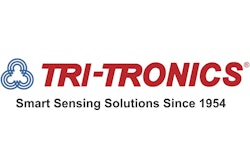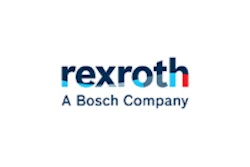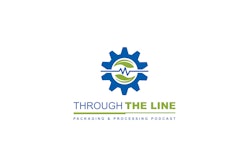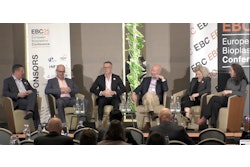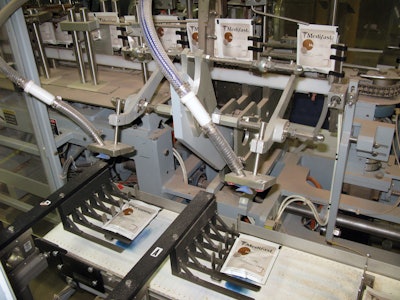
Single-serve 30-g pouches of powdered meal replacements for people on weight loss programs have been flowing out of Medifast’s headquarters facility at a brisk pace over the last few years as demand for the clinically proven and popular products has been strong. So the Owings Mills, MD, health and wellness company added two new horizontal form/fill/seal lines in December 2014.
Each of the new lines is anchored by a pouching system from KHS Bartelt as well as an end-load cartoner from the same supplier. Uniformity in pouching equipment from one line to the next was a big driver behind Medifast’s choice of putting Bartelt equipment in both lines. But accuracy of fill is also a key. “The powders we fill are costly, so yield is crucial,” says Ron Marburger, Engineering Manager Operations and Supply Chain.
While pouching systems and cartoners on the two new lines are essentially the same as on systems Medifast has operated in the past, dramatically different is what’s in between poucher and cartoner: a continuous-motion delta style robotic system from Codian Robotics that uses vacuum cups to pick laid-flat pouches two at a time from a Dorner conveyor and neatly stack them seven-high in collating buckets on the cartoner infeed. Once two buckets have their full complement of pouches, they’re advanced in the direction of the cartoner and two new buckets move into place to be filled. The full buckets, meanwhile, index into the cartoner so that the seven-count stacks of pouches can be pushed into a tuck-style paperboard carton.
Making this high-speed robotic transfer even more intriguing is that the robot’s end-of-arm tooling rotates every other pouch. Marburger explains why.
“The powder tends to bunch up at the bottoms of the pouches so that you have a fatter bottom and a very thin top. If you stack seven of them this way, you’re looking at a stack that is very unstable, which naturally leads to handling problems and frequent jams on the cartoner. By alternating the pouches this way, we have a much more uniform, repeatable, and stable stack.”
While KHS Bartelt’s choice for robotic hardware was Codian, the robotic infeed system and the robot itself are controlled by the five-axis cartoner’s Bosch Rexroth IndraMotion MLC motion logic control platform, which is similar to the controller governing the upstream eight-axis poucher. This control platform delivers all the motion and robot control capabilities needed for what a controls geek might call “multiaxis path interpolation in space.” Translation: The control platform so accurately synchronizes the movement of the delta style robot to the movement of the pouches on the Dorner conveyor that the robot “knows” exactly where in space to go each time it needs to pick a pouch—even though the pouches are moving targets.
The Bosch Rexroth platform features a full software library of ready-to-use kinematics for robotics applications and supports fast set-up configuration using onscreen dialog boxes.
Scalable controller
The controller hardware is the Rexroth IndraControl L65, a powerful, scalable unit featuring a compact design and integrated standard interfaces, including Ethernet TCP/IP and Sercos. “Bosch Rexroth’s controller provides all the functionality and processing power that was required for both the delta robot and the cartoning machine,” says Tom Tomac, KHS Bartelt Electrical Engineering Manager. The IndraMotion MLC controllers for the poucher and cartoner are networked together using an external controller-to-controller Sercos interface, which fully integrates control of the packaging process from pouching through cartoning.
“The external Sercos ring lets us share positioning information between the two controllers,” says Tomac. “With the logic of the controller, the delta robot can track each pouch’s position deterministically in real time coming off the poucher and checkweigher without requiring a vision system. The pouching throughput speed can change and the robot will respond to the change without interruption.”
Networking both controllers and having the robot and the cartoner share one control platform also made it relatively simple and more cost-effective to integrate the robot into Medifast’s existing systems. Rexroth’s user-friendly IndraWorks programming package was used to program the IndraMotion MLC platforms with a single uniform programming environment for logic, motion, and kinematics.
The robot is powered by Rexroth IndraDyn servo motors coupled with intelligent IndraDrive M servo drives. Both pouching and cartoning machines use Rexroth’s IndraDrive Mi cabinet-free integrated servo drive/motor solution, which merges the drive electronics and servo motors into single units that help reduce cabling requirements and the size of the control cabinet as well as the overall machine footprint. Using the IndraDrive Mi allowed KHS to eliminate a freestanding drive and control cabinet and use a smaller, machine-mounted cabinet. Removing the cabinet and adding a delta robot let KHS align the poucher and cartoner in a straight, in-line orientation, thus streamlining the physical footprints of the two new lines.
A human-machine interface ties in with the Rexroth IndraMotion MLC platform to control changeovers when different products are processed. Depending on the product, the pouch can be thinner or thicker, which changes how the robot stacks the pouches. According to Marburger, the Rexroth controller makes adjusting the robot arm’s positioning a snap. “It shows all the coordinates for the robot, and it makes it very easy to change them when you need to,” he says. “That feature is very helpful, and we can easily train our operators to do it.”
Medifast uses Overall Equipment Effectiveness (OEE) to track the performance of its manufacturing systems. Under the previous pouching/cartoning configuration the maximum OEE they were able to achieve for a single shift was 83 percent. “Most recently, the delta robot has helped us reach almost 97 percent OEE, which absolutely crushed our previous record,” says Marburger.
The specific OEE tool used by Medifast is the XL Productivity Appliance from Vorne. It’s described as a “bolt-on,” off-the-shelf hardware/software combination that can be installed and operating in an hour and comes with a price tag of about $4,500.
Film infeed
Both lines operate essentially the same way. The pouching machine is fed a paper/foil lamination supplied by Veritiv. It indexes at 70/min, but pouches are produced two up so output is in the range of 140/min. Integrated into the KHS Bartelt system is a High Resolution Thermal Ink-Jet Printer from Mark-O-Print. A division of the BluhmWeber Group, Mark-O-Print has been an HP partner since 2003. Information printed on the front side of each pouch is product name, expiration date, time of day, line identification, lot number, and a list of allergens.
Timing the Mark-O-Print printer is a Smarteye Colormark II from Tri-Tronics that looks for a registration mark on the packaging material and signals the printer when to print. Also inspecting for red splice tape is a Mark-Eye Pro, also from Tri-Tronics, which signals the pouching system not to dispense product into pouches that might be compromised by a splice.
As a pair of pouches nears the pickoff station and their exit from the poucher, a knife cuts them apart. Vacuum cups pick each pouch from the mechanical grippers they’re held in and places them on a pair of pedestal checkweighers from Mettler Toledo. Here’s another place where the Bosch Rexroth controls platform adds value. The robot takes inputs from the checkweighers and only picks up and collates the good pouches, while any rejects continue advancing forward until they fall into a reject bin.
This represents a significant improvement over the pouching/cartoning lines installed previously at Medifast, where the mechanical pouch stacking system is designed to always place two pouches at a time into two collating buckets. That way, both collating buckets will always have the correct complement of seven pouches each. If the checkweigher determines that either pouch has the wrong weight, two pouches are ejected to the reject bin even though one of them is perfectly accurate. Why? Because if the checkweigher ejected only the bad pouch, one of the two collating buckets would be short a pouch when the collating bucket reached the station where the stacks of seven pouches are pushed into the cartons.
So the good news on the older equipment is that each collating bucket has the correct number of pouches when it reaches the cartoner. The bad news is that periodically in the course of the day an operator has to spend time weighing all the pouches in the reject bin to determine which one actually is the bad one.
With the new robotic approach, only bad pouches get rejected. Neatly collated seven-count stacks of pouches move into the cartoner in their collating buckets and are automatically pushed into a carton. Flaps are tucked closed and operators then case pack the cartons by hand. Assisting them is the Combi EZ-Pack semi-automatic pack station from Combi Packaging Systems. An operator picks up a folded corrugated case, opens it along the manufacturers joints, and places it into the bottom-folding section of the machine. Once the bottom is folded, the operator places the required number of cartons inside and then pushes the case through the Combi system’s top-and-bottom taping section. Palletizing is done by hand.
Although this was the first time Medifast installed delta robot technology in their plant, the company’s past experience with KHS Bartelt gave everyone confidence that the move to robotic transfer would be a success. “We trusted KHS and it was very easy working with them,” says Marburger. “Plus, we’re engineers, so we were excited about bringing a robot into the plant.”
Marty Bechtel, Sales Director at KHS Bartelt Packaging Group, sums up the successful project this way. “We knew that Medifast had the environment that would make the best use of this particular solution, and we knew the Rexroth controls and drives would make it easy to integrate it into their operations. It was the right move.”










